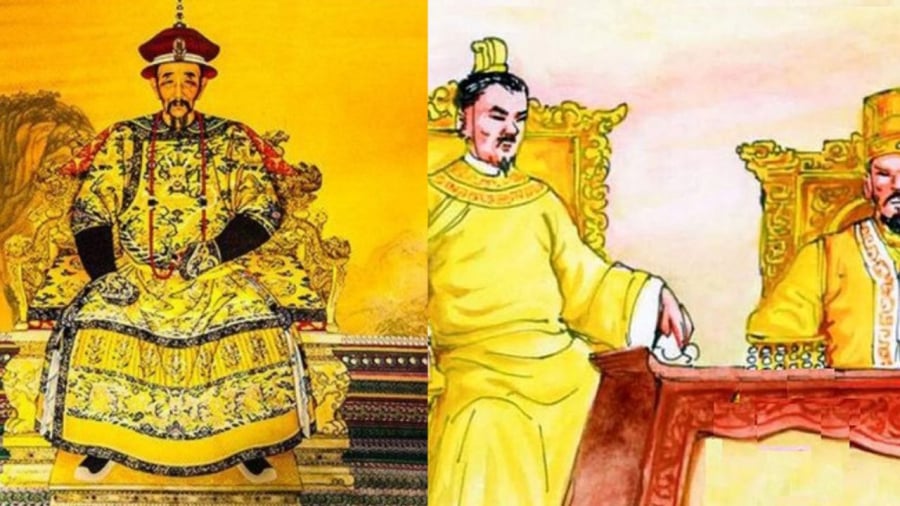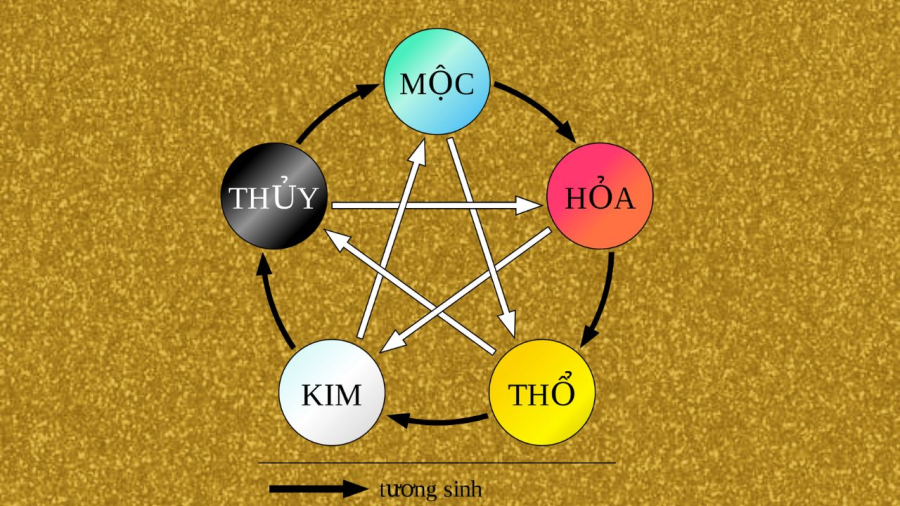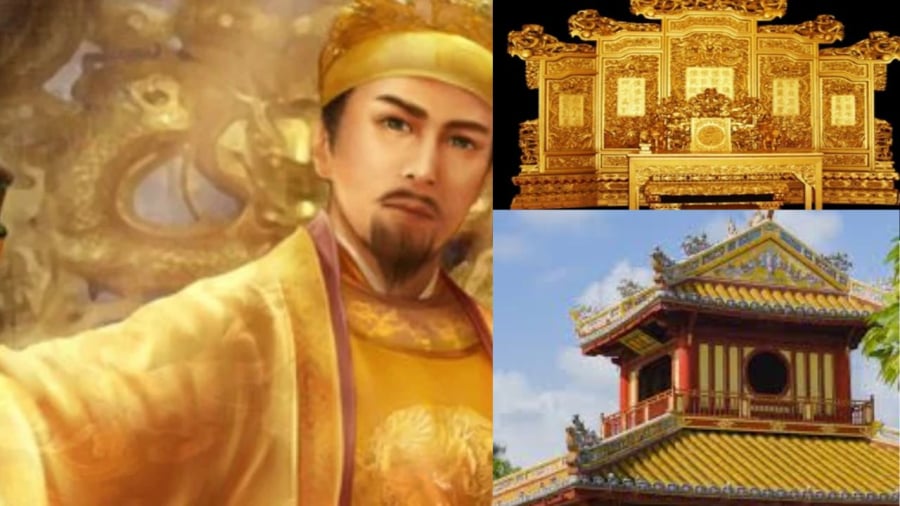Throughout the length of feudal history, the color yellow has always been considered a symbol of power, nobility, and wealth. From ancient China to the feudal dynasties of Vietnam and Western civilizations, yellow has often been associated with royalty and aristocracy. So why did emperors and kings choose this color? Let’s explore the deep historical, cultural, and spiritual reasons to better understand the unique appeal of the color yellow.
1. Yellow – A Symbol of Light and Supreme Power
Yellow is the color of sunlight – the source of life and the light that sustains all things. In ancient beliefs, the sun was considered a deity, the supreme symbol of life. Therefore, using yellow was a way of expressing the divine and almost immortal power of the head of state.
In the East, yellow was considered the color of the Son of Heaven – the one chosen by Heaven to rule the world. In the West, emperors and kings often wore clothing with a yellow hue or embroidered with golden threads to signify their supreme status.

2. Yellow in the Five Elements Theory
In the culture of the East, according to the Five Elements Theory, yellow represents the center element, Earth, among the five elements (metal, wood, water, fire, and earth). Yellow symbolizes the earth – the solid foundation of the universe. During the Tang Dynasty, only the emperor was allowed to wear yellow dragon robes. Anyone who deliberately wore yellow was considered a rebel and could face severe punishment.
The architecture of the Chinese Imperial Palace, such as the Forbidden City, also used special yellow tiles reserved for royalty. Even the utensils, jewelry, and clothing of the empress and royal concubines had to adhere to strict regulations regarding the shades of yellow. This indicates that yellow was not just a preference but a legal requirement, reflecting the solemnity and prestige of the imperial family.

In Vietnam, historical records suggest that before the Ly Dynasty, common people could wear yellow, but from around 1182, the court tightened the regulations, strictly forbidding the use of this color by the general public. Yellow then became exclusively associated with royal attire as a symbol of authority.
During the Nguyen Dynasty, different shades of yellow also represented the distinction of ranks and classes. The varying shades of yellow in clothing indicated one’s position and status.
3. Yellow in Western Culture
Not only in Asia but also in Western countries, yellow was considered a symbol of nobility and power. In the crowns of European kings, gold, which is a shade of yellow, was the primary material, symbolizing eternity and constancy. In Christian churches, yellow was used to adorn sacred objects such as crosses, chalices, and statues of the Lord to honor holiness and divine light.
Additionally, during the Renaissance, artists often used yellow to portray the halos of saints, angels, and God in religious paintings, further associating the color with divinity, power, and majesty.
4. Yellow – A Symbol of Wealth and Prosperity
Gold, a precious metal of high value, is the most tangible representation of wealth. Therefore, yellow became a symbol of fortune and prosperity. Ancient rulers hoarded gold as a means of consolidating power and ensuring economic and military stability. Royal attire, thrones, weapons, and other objects within the palace were gilded or made of pure gold, showcasing opulence and absolute authority.
In feng shui, yellow also carries a strong yang energy, attracting good luck, stimulating intelligence, and elevating one’s status. This is why, in solemn ceremonies, yellow is often used as a decorative color, wishing for national prosperity and abundant harvests.

5. Yellow and the Psychology of Authority
Color psychology suggests that yellow creates a sense of prominence, attracting attention and invoking a sense of reverence. People wearing yellow clothing tend to stand out and command respect from others. For emperors and kings, who held the fate of their nations in their hands, establishing an image of solemnity and power was of utmost importance. Hence, yellow was chosen as a tool to reinforce their position and instill awe in their subjects.
6. The Only Emperor to Use Black as the Imperial Color
Qin Shi Huang (210-259 BC) was the first emperor to unify China. However, he chose black as the color of his imperial robe.
According to the ancient Yin-Yang and Five Elements Theory, Qin Shi Huang was believed to possess the Water element, corresponding to the Water element in the Five Elements. In the historical context of that time, water symbolized the force that extinguished rebellious forces, just as water could extinguish fire. The six warring states that existed before the Qin Dynasty’s unification were likened to small flames, and the Qin state, like a vast body of water, extinguished them all.
Thus, black, representing the Water element, became the dominant color in the Qin court. From imperial robes to military uniforms, flags, and even tents, black was used to signify absolute power and dominance. This choice also conveyed a deeper meaning: once conquered, the old forces would not be able to “rise from the ashes.”
Legend has it that Qin Shi Huang’s ancestors, the Ying family, had made significant contributions to the Great Yu’s efforts in controlling the floods, a task that required a profound understanding of water. As a result, Emperor Shun bestowed upon this family the surname Ying, acknowledging their accomplishments. From then on, water and the Water element became a core element in the political and spiritual culture of the Qin people.
The worship of the Water element led to the association of black with good fortune and the protective power of the court in the eyes of the Qin people. Black was not only the imperial color during the Qin Dynasty but also permeated daily life, widely embraced by the common folk.
It is said that Qin Shi Huang once issued a decree strictly forbidding the use of flags of other colors in the military. Anyone who violated this rule, even members of the royal family, would face execution. This demonstrates the absolute consistency in maintaining the symbol of dominance based on the Five Elements Theory and color symbolism.
However, folklore also suggests that the color black brought bad luck, leading to the eventual downfall of the Qin Dynasty. Subsequent dynasties mostly used yellow, with the Han Dynasty favoring red.
Conclusion: The choice of yellow by emperors and kings was not merely a matter of preference or coincidence but a culmination of cultural, historical, and spiritual factors. Yellow represented light, divinity, prosperity, and supreme power – all the attributes a ruler needed to solidify his position among the people. Even today, yellow retains its special appeal, not only in fashion and architecture but also as a symbol of elegance, sophistication, and success.






























